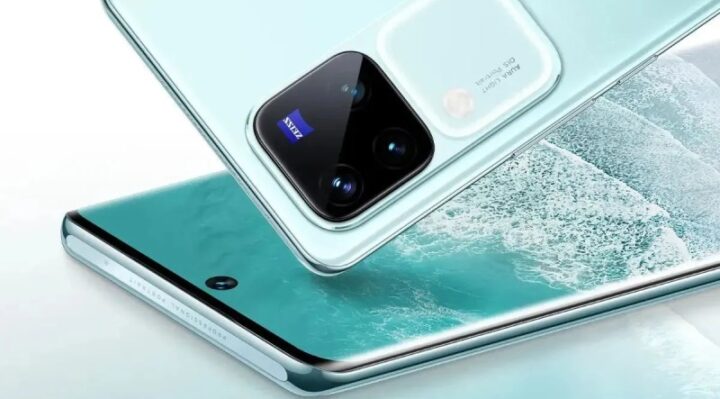Vivo V30 Pro vs. Xiaomi 14 Civi: A Comprehensive Comparison


The 14 Civi, a new rival from Xiaomi, has just entered the competitive Indian mid-range smartphone market. Its target market and starting price are comparable to the Vivo V30 Pro’s.
Given that similar customers find both phones appealing, it makes sense that they would want to know which one offers greater value for the money. To assist you in making an informed choice, we will compare the two phones’ performance, battery life, cameras, design, and software.
1. Display and Design
The 6.55-inch AMOLED display of the Xiaomi 14 Civi has a 120Hz LTPO refresh rate, which enables the refresh rate to change depending on the content. The screen is shielded by Corning Gorilla Glass Victus 2 and features a resolution of 1236 x 2750 pixels.
On the other hand, the 6.78-inch AMOLED display on the Vivo V30 Pro is larger and features a refresh rate of 120Hz along with a resolution of 1260 x 2800 pixels. It does not, however, have LTPO technology, and the Schott α glass is marginally subpar. Both phones include AMOLED displays, which provide great contrast and vibrant colours.
In terms of design, both phones have a 7.5mm slim profile and a light, thin frame. In addition to having a glass back, the Xiaomi 14 Civi’s Cruise Blue model also features a leather finish. Whereas the Xiaomi 14 Civi is not officially rated for intrusion protection, the V30 Pro is rated IP54 for dust and water resistance.
2. Performance and Software
The Snapdragon 8s Gen 3 SoC, which powers the Xiaomi 14 Civi, delivers impressive performance. It’s a flagship-level CPU designed to handle demanding tasks, including smoothly running resource-intensive games.
In contrast, the Vivo V30 Pro chooses a more entry-level MediaTek Dimensity 8200 SoC. This processor is also quite capable, providing outstanding performance for daily tasks and the majority of games. In terms of scores and raw power, it will lag below the Snapdragon 8s Gen 3 still. Therefore, the Xiaomi 14 Civi is superior for those who require future-proofing and top-tier performance.
Up to 512GB of storage and up to 12GB of RAM are available on both phones. Regarding software, the Vivo V30 Pro runs FunTouch OS 14, which is likewise based on Android 14, while the Xiaomi 14 Civi runs HyperOS, which is based on Android 14.
Notably, the Vivo V30 Pro will receive one year fewer of both software upgrades and security patches than the Xiaomi 14 Civi, which will receive three Android upgrades and four years of security updates.
3. Camera System
These phones have triple-lens systems for their rear cameras. The renowned camera manufacturer Leica and Xiaomi have partnered to provide the 14 Civi with a 50MP primary, a 12MP ultrawide, and a 50MP telephoto sensor, all of which are fitted with a Leica Summilux lens.
On the other hand, the Vivo V30 Pro has two more 50MP sensors—one for telephoto and one for ultrawide photography—in addition to its primary 50MP camera. Co-engineered with Zeiss, a well-known camera brand worldwide, are these lenses.
We are unable to determine which is a better camera phone in the absence of comprehensive camera tests. However, since the telescopic lens on both devices is dedicated, you can take detailed close-ups of other items in addition to excellent portraiture.
The Xiaomi 14 Civi is notable for its front camera configuration. In contrast to the V30 Pro, which has a single 50MP wide lens, it has two 32MP lenses: one for wide images and another for ultrawide shots.
Naturally, Xiaomi’s twin camera setup offers additional flexibility in scenarios such as group selfies with plenty of friends.
4. Battery and Charging
In terms of battery capacity, the Civi 4 Pro has a 4,700mAh battery, while the Vivo V30 Pro has a 5,000mAh unit. However, depending on how well each phone is optimised, the difference might not be noticeable in day-to-day use.
While both phones allow fast charging, the Xiaomi 14 Civi only supports 67W while the Vivo V30 Pro offers 80W of speed.
5. Price and Availability
There are comparable price structures for both phones. The Vivo V30 Pro has a slightly lower starting price of Rs 41,999 for the same configuration as the Xiaomi 14 Civi, which is Rs 42,999 for 8GB RAM and 256GB storage.
The price difference becomes less noticeable for the larger storage options, with the Xiaomi and Vivo charging Rs 47,999 and Rs 46,999, respectively, for their 12GB RAM and 512GB storage variants.


